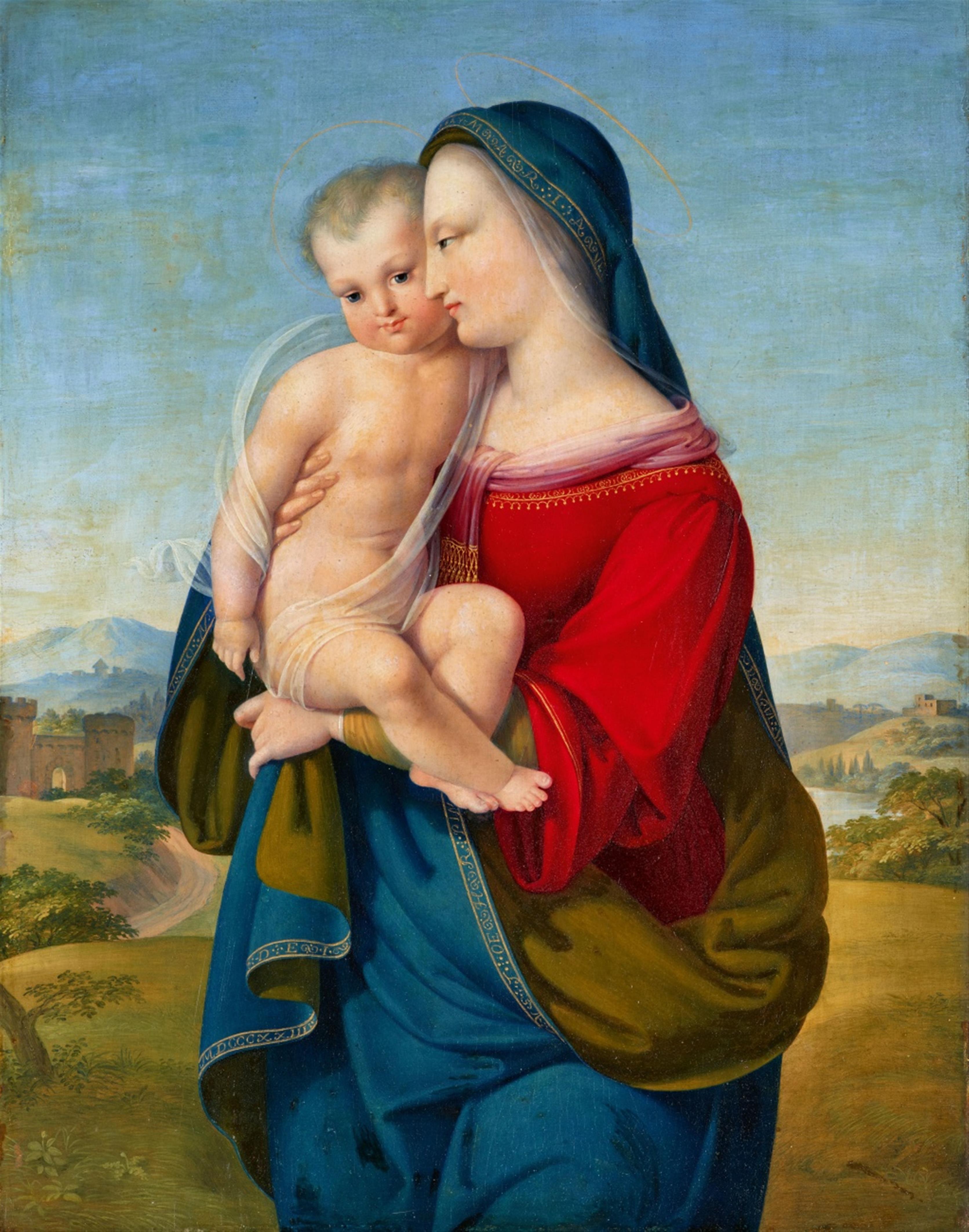Philipp Stöhr
The Virgin and Child in a Panoramic Landscape
Oil on panel (parquetted). 37 x 29 cm.
Signed and dated on the gold hem of the blue cloak: STOEHR PIN MDCCCXXIII DEI.
After four years of training in draughtsmanship in Würzburg, Stöhr enrolled in 1812 at the Academy of Fine Arts in Vienna, which was dominated by the eclectic Baroque Classicism of Heinrich Friedrich Füger. By 1810, Stöhr's contemporaries Friedrich Overbeck, Franz Pforr, Ludwig Vogel and Johann Konrad Hottinger had already turned their backs on this narrow environment to study their revered Italian models in Rome. Philipp Stöhr certainly first came into contact with their religiously motivated ideal of renewal through his acquaintance with Joseph Sutter, who had stayed behind in Vienna. In 1816, Stöhr returned to his homeland of Franconia and one year later applied to the royal directorate in Würzburg for financial support to continue his education in Italy. We know of Stöhr's stay in Florence, where he made a copy of Raphael's Madonna della Sedia in the Palazzo Pitti, because it is mentioned in Schnorr von Carolsfeld's letters from Italy.
The precisely labelled and dated landscape studies in his five surviving sketchbooks from the two years in Italy provide a fairly good overview of his travel route, which took him to through the Roman Campagna and the surroundings of Naples. They also depict his circle of friends, colleagues and acquaintances in portrait drawings. In the spring of 1820, Philipp Stöhr returned to Vienna, where he stayed for three years. There he exhibited three paintings at the Academy's annual exhibition in 1822. In 1824 he finally settled with his young family in Würzburg, where he made a secure living until his death in 1856 as a teacher at the royal university and later as a professor of advanced draughtsmanship. In his last creative phase, Stoehr confined himself to late Biedermeier portraits - above all of his closer relatives.
Stoehr's fascination with Raphael is also evident in the present work, which is characterised by a clarity of form and coolness of colouring - a remarkable example of Nazarene art.
On the reverse is an old label with a German inscription translating to: "This picture, "Madonna and Child" was painted by my grandfather Philipp Stoehr." Underneath is a signature in brown ink: "Mrs. Agnes Wortmann née Stoehr".
Provenance
West German private ownership.

